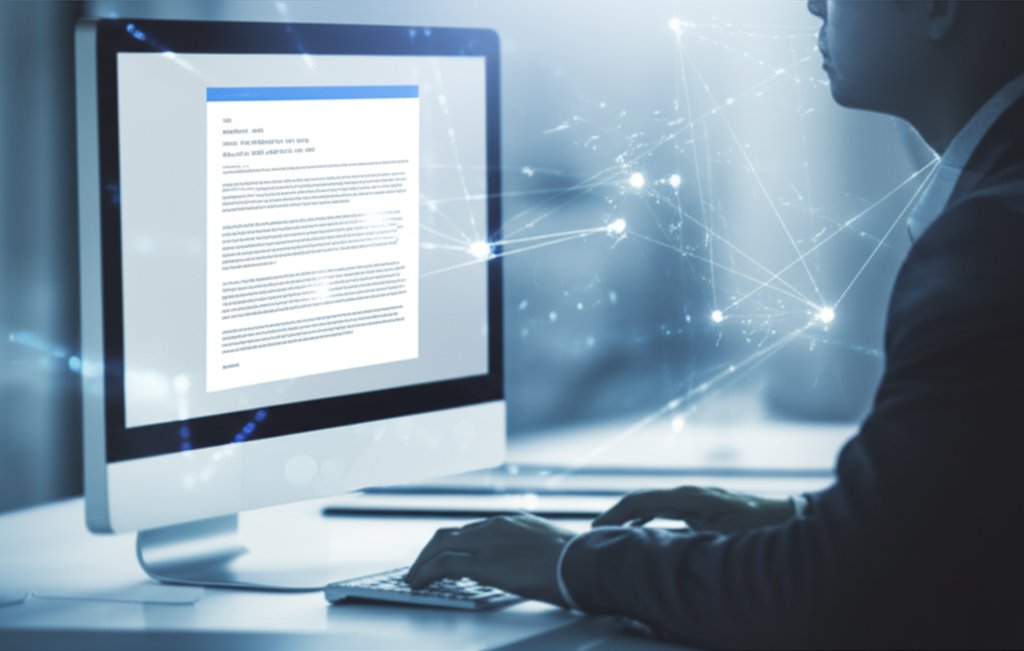Have you ever wondered why even seasoned tech users are falling for phishing scams these days? It’s not just you. The digital landscape is shifting, and cybercriminals are getting smarter, leveraging artificial intelligence to craft increasingly sophisticated attacks. These aren’t your grandpa’s poorly worded email scams; we’re talking about AI-powered phishing campaigns that are remarkably convincing and incredibly hard to detect. They’re slipping past traditional defenses, leaving many feeling vulnerable.
Our goal isn’t to create alarm, but to empower you with actionable insights. We’ll unpack why these AI-powered threats keep getting through our digital fences and, more importantly, equip you with practical solutions. This includes understanding the new red flags, adopting advanced strategies like phishing-resistant MFA, and leveraging AI-powered defense systems. Translating these complex threats into understandable risks, we’ll show you how to truly take control of your digital security and stay safe. Learning to defend against them is more crucial than ever.
Table of Contents
- What exactly is AI-powered phishing?
- How is AI-powered phishing different from traditional phishing?
- Why are AI phishing attacks so much harder to spot?
- What makes AI a game-changer for cybercriminals?
- How does AI personalize phishing emails so effectively?
- Can AI deepfakes really be used in phishing?
- Why can’t my existing email security filters catch these advanced AI attacks?
- What are the new “red flags” I should be looking for?
- How can security awareness training help me and my employees against AI phishing?
- What role does Multi-Factor Authentication (MFA) play, and is it enough?
- What is “phishing-resistant MFA,” and why should I care?
- How does adopting a “Zero Trust” mindset protect me from AI phishing?
- Can AI also be used to defend against these sophisticated attacks?
- What are the most crucial steps small businesses should take right now?
Basics
What exactly is AI-powered phishing?
AI-powered phishing utilizes artificial intelligence, especially large language models (LLMs) and generative AI, to create highly sophisticated and convincing scams. Unlike traditional phishing that often relies on generic templates, AI allows attackers to craft personalized, grammatically flawless, and contextually relevant messages at scale.
Essentially, it’s phishing on steroids. Cybercriminals feed information into AI tools, which then generate persuasive emails, texts, or even deepfake voice messages that are incredibly difficult to distinguish from legitimate communications. This isn’t just about spell-checking; it’s about mimicking tone, understanding context, and exploiting human psychology with unprecedented precision. It’s a game-changer for attackers, making their jobs easier and our jobs (as defenders) much harder.
How is AI-powered phishing different from traditional phishing?
The main difference lies in sophistication and scale. Traditional phishing often had glaring red flags like poor grammar, generic greetings, and obvious formatting errors. You could usually spot them if you paid close attention.
AI-powered phishing, however, eliminates these giveaways. With generative AI, attackers can produce perfect grammar, natural language, and highly personalized content that truly mimics legitimate senders. Imagine an email that references your recent LinkedIn post or a specific project at your company, all written in a tone that perfectly matches your CEO’s. This level of detail and personalization, generated at an enormous scale, is something traditional methods simply couldn’t achieve. It means the old mental checklists for identifying scams often aren’t enough anymore, and we need to adapt our approach to security.
Why are AI phishing attacks so much harder to spot?
AI phishing attacks are harder to spot primarily because they bypass the traditional indicators we’ve been trained to look for. The obvious tells—like bad grammar, strange formatting, or generic salutations—are gone. Instead, AI crafts messages that are grammatically perfect, contextually relevant, and hyper-personalized, making them look incredibly legitimate.
These attacks exploit our trust and busyness. They might reference real-world events, internal company projects, or personal interests gleaned from public data, making them seem highly credible. When you’re rushing through your inbox, a perfectly worded email from a seemingly trusted source, asking for an urgent action, is incredibly convincing. Our brains are wired to trust, and AI expertly leverages that, eroding our ability to differentiate real from fake without intense scrutiny.
What makes AI a game-changer for cybercriminals?
AI transforms cybercrime by offering unprecedented speed, scale, and sophistication. For cybercriminals, it’s like having an army of highly intelligent, tireless assistants. They can generate thousands of unique, personalized, and grammatically flawless phishing emails in minutes, something that would have taken a human team weeks or months. This automation drastically reduces the effort and cost associated with launching massive campaigns.
Furthermore, AI can analyze vast amounts of data to identify prime targets and tailor messages perfectly to individual victims, increasing success rates. This means attackers can launch more targeted, convincing, and harder-to-detect scams than ever before, overwhelming traditional defenses and human vigilance. This truly redefines the landscape of digital threats.
Intermediate
How does AI personalize phishing emails so effectively?
AI’s personalization prowess comes from its ability to rapidly analyze and synthesize public data. Cybercriminals use AI to trawl social media profiles, corporate websites, news articles, and even data from previous breaches. From this vast sea of information, AI can extract details like your job role, recent activities, personal interests, family members, or even specific projects you’re working on.
Once armed with this data, large language models then craft emails or messages that incorporate these specific details naturally, making the communication seem incredibly authentic and relevant to you. Imagine an email seemingly from your boss, discussing a deadline for “Project X” (which you’re actually working on) and asking you to review a document via a malicious link. It’s this level of bespoke content that makes AI phishing so effective and so hard for us to inherently distrust.
Can AI deepfakes really be used in phishing?
Absolutely, AI deepfakes are a rapidly growing threat in the phishing landscape, moving beyond just text-based scams. Deepfakes involve using AI to generate incredibly realistic fake audio or video of real people. For example, attackers can use a small audio sample of your CEO’s voice to generate new speech, then call an employee pretending to be the CEO, demanding an urgent money transfer or access to sensitive systems.
This is often referred to as “vishing” (voice phishing) or “deepfake phishing.” It bypasses email security entirely and preys on our innate trust in human voices and faces. Imagine receiving a video call that appears to be from a colleague, asking you to share your screen or click a link. It’s incredibly difficult to verify in the moment, making it a powerful tool for sophisticated social engineering attacks. We’re already seeing instances of this, and it’s something we really need to prepare for.
Why can’t my existing email security filters catch these advanced AI attacks?
Traditional email security filters primarily rely on static rules, blacklists of known malicious senders or URLs, and signature-based detection for known malware. They’re excellent at catching the obvious stuff—emails with bad grammar, suspicious attachments, or links to previously identified phishing sites. The problem is, AI-powered phishing doesn’t trip these old alarms.
Since AI generates flawless, unique content that’s constantly evolving, it creates brand-new messages and uses previously unknown (zero-day) links or tactics. These don’t match any existing blacklist or signature, so they simply sail through. Your filters are looking for the old red flags, but AI has cleverly removed them. It’s like trying to catch a camouflaged predator with a net designed for brightly colored fish.
What are the new “red flags” I should be looking for?
Since the old red flags are disappearing, we need to adapt our vigilance. The new red flags for AI phishing are often more subtle and behavioral. Look for:
- Hyper-Personalization with Urgency: An email that’s incredibly tailored to you, often combined with an urgent request, especially if it’s unexpected.
- Perfect Grammar and Tone Mismatch: While perfect grammar used to be a good sign, now it’s a potential red flag, especially if the sender’s usual communication style is more informal.
- Unexpected Requests: Any email or message asking you to click a link, download a file, or provide sensitive information, even if it seems legitimate.
- Slightly Off Email Addresses/Domains: Always double-check the full sender email address, not just the display name. Look for tiny discrepancies in domain names (e.g., “micros0ft.com” instead of “microsoft.com”).
- Unusual Delivery Times or Context: An email from your CEO at 3 AM asking for an urgent bank transfer might be suspicious, even if the content is perfect.
The key is to cultivate a healthy skepticism for all unexpected or urgent digital communications.
How can security awareness training help me and my employees against AI phishing?
Security awareness training is more critical than ever, focusing on making every individual a “human firewall.” Since AI-powered attacks bypass technical defenses, human vigilance becomes our last line of defense. Effective training needs to evolve beyond just spotting bad grammar; it must teach users to recognize the new tactics, like hyper-personalization, deepfakes, and social engineering ploys.
It’s about empowering people to question, verify, and report. We need to teach them to pause before clicking, to verify urgent requests through alternative, trusted channels (like a phone call to a known number, not one in the email), and to understand the potential impact of falling for a scam. Regular, engaging training, including simulated phishing exercises, can significantly reduce the likelihood of someone falling victim, protecting both individuals and small businesses from potentially devastating losses.
What role does Multi-Factor Authentication (MFA) play, and is it enough?
Multi-Factor Authentication (MFA) remains a crucial security layer, significantly raising the bar for attackers. By requiring a second form of verification (like a code from your phone) beyond just a password, MFA makes it much harder for criminals to access your accounts even if they steal your password. It’s a fundamental defense that everyone, especially small businesses, should implement across all services.
However, traditional MFA methods (like SMS codes or one-time passcodes from an authenticator app) aren’t always enough against the most sophisticated AI-powered phishing. Attackers can use techniques like “MFA fatigue” (bombarding you with notifications until you accidentally approve one) or sophisticated phishing pages that trick you into entering your MFA code on a fake site. So, while MFA is vital, we’re now moving towards even stronger, “phishing-resistant” forms of it to truly stay ahead.
Advanced
What is “phishing-resistant MFA,” and why should I care?
Phishing-resistant MFA is a superior form of multi-factor authentication designed specifically to thwart even the most advanced phishing attempts. Unlike traditional MFA that relies on codes you can input (and therefore, potentially phish), phishing-resistant MFA uses cryptographic proofs linked directly to a specific website or service. Technologies like FIDO2 security keys (e.g., YubiKeys) or built-in biometrics with strong device binding (like Windows Hello or Apple Face ID) are prime examples.
With these methods, your authentication factor (your security key or biometric data) directly verifies that you are on the legitimate website before it will send the authentication signal. This means even if you accidentally land on a convincing fake site, your security key won’t work, because it’s only programmed to work with the real site. It completely removes the human element of having to discern a fake website, making it incredibly effective against AI’s ability to create perfect replicas. For truly critical accounts, this is the gold standard of protection.
How does adopting a “Zero Trust” mindset protect me from AI phishing?
A “Zero Trust” mindset is a security philosophy that essentially means “never trust, always verify.” Instead of assuming that anything inside your network or from a seemingly legitimate source is safe, Zero Trust mandates verification for every user, device, and application, regardless of their location. For AI phishing, this translates to:
- Verify Everything: Don’t automatically trust any email, message, or request, even if it appears to come from a trusted colleague or organization.
- Independent Verification: If a message asks for sensitive action, verify it through an independent channel. Call the sender using a known, pre-saved phone number (not one provided in the email).
- Least Privilege: Ensure that individuals and systems only have the minimum access necessary to perform their tasks, limiting the damage if an account is compromised.
This approach forces you to be constantly vigilant and question the authenticity of digital interactions, which is precisely what’s needed when AI makes fakes so convincing. It’s a shift from perimeter security to focusing on every single transaction, which is critical in today’s threat landscape.
Can AI also be used to defend against these sophisticated attacks?
Absolutely, it’s not all doom and gloom; we’re essentially in an AI arms race, and AI is also being leveraged defensively. Just as AI enhances attacks, it also empowers our defenses. Security vendors are developing advanced email security gateways and endpoint protection solutions that use AI and machine learning for real-time threat detection, rather than relying solely on static rules.
These AI-powered defense systems can identify deviations from normal communication, spot deepfake indicators, or flag suspicious language nuances that a human might miss. They can analyze vast amounts of data in real-time to predict and block emerging threats before they reach your inbox. So, while AI makes phishing smarter, it’s also providing us with more intelligent tools to fight back. The key is for technology and human vigilance to work hand-in-hand.
What are the most crucial steps small businesses should take right now?
For small businesses, protecting against AI phishing is paramount to avoid financial losses and reputational damage. Here are crucial steps:
- Prioritize Security Awareness Training: Regularly train employees on the new red flags, emphasizing skepticism and independent verification. Make it interactive and frequent.
- Implement Phishing-Resistant MFA: Move beyond basic MFA to FIDO2 security keys or authenticator apps with strong device binding for critical accounts.
- Upgrade Email Security: Invest in advanced email security gateways that utilize AI and machine learning for real-time threat detection, rather than relying solely on static rules.
- Adopt a Zero Trust Mentality: Encourage employees to verify all suspicious requests via a known, independent channel.
- Regular Software Updates: Keep all operating systems, applications, and security software patched and up-to-date to close known vulnerabilities.
- Develop an Incident Response Plan: Know what to do if an attack succeeds. This includes reporting, isolating, and recovering.
- Backup Data: Regularly back up all critical data to ensure recovery in case of a successful ransomware or data-wiping attack.
These measures create a multi-layered defense, significantly reducing your business’s vulnerability.
Related Questions
- What is social engineering, and how does AI enhance it?
- How can I protect my personal data from being used in AI phishing attacks?
- Are password managers still useful against AI phishing?
Conclusion: Staying Ahead in the AI Phishing Arms Race
The rise of AI-powered phishing attacks means the old rules of online safety simply don’t apply anymore. Cybercriminals are using sophisticated AI tools to create highly convincing scams that bypass traditional defenses and target our human vulnerabilities with unprecedented precision. It’s a serious threat, but it’s not one we’re powerless against. By understanding how these attacks work, recognizing the new red flags, and adopting advanced security practices like phishing-resistant MFA and a Zero Trust mindset, we can significantly strengthen our defenses.
Protecting yourself and your digital life is more critical than ever. Start with the basics: implement a strong password manager and enable phishing-resistant Two-Factor Authentication (2FA) on all your accounts today. Continuous learning and proactive security measures aren’t just good practices; they’re essential for staying ahead in this evolving digital landscape.



